Better than cargo cages? Tailfin launches new Fork Pack front pannier system
The proven ‘mini pannier’ concept now moves to the front
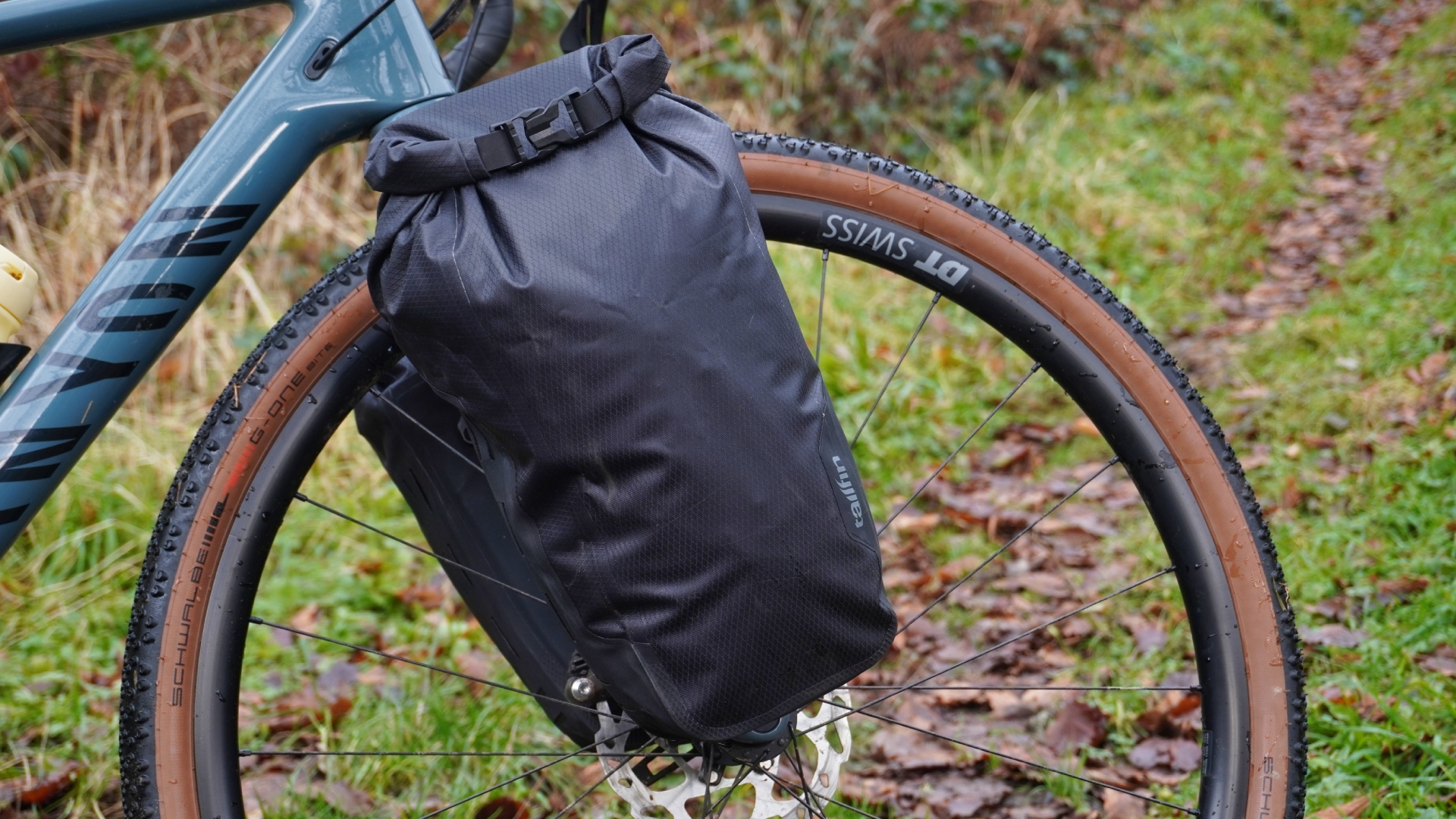
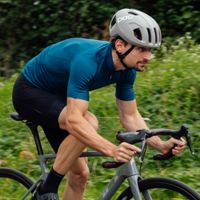
Tailfin is continuing to expand its bikepacking range, and has now added a front pannier system into its burgeoning bank of bags.
I’ll get onto our first look and ride further down, but to give a very quick summary now, Tailfin’s new system is a lightweight, secure, spacious and easy-to-use. The system provides a solution to many perennial bikepacking dilemmas and difficulties. On the other hand, at $125 / £100 per 10 liter bag, it certainly is an expensive solution.
But before getting any further into the details of these bags, it would be helpful to take a step back and reflect on the broader context of fork-mounted bikepacking luggage…
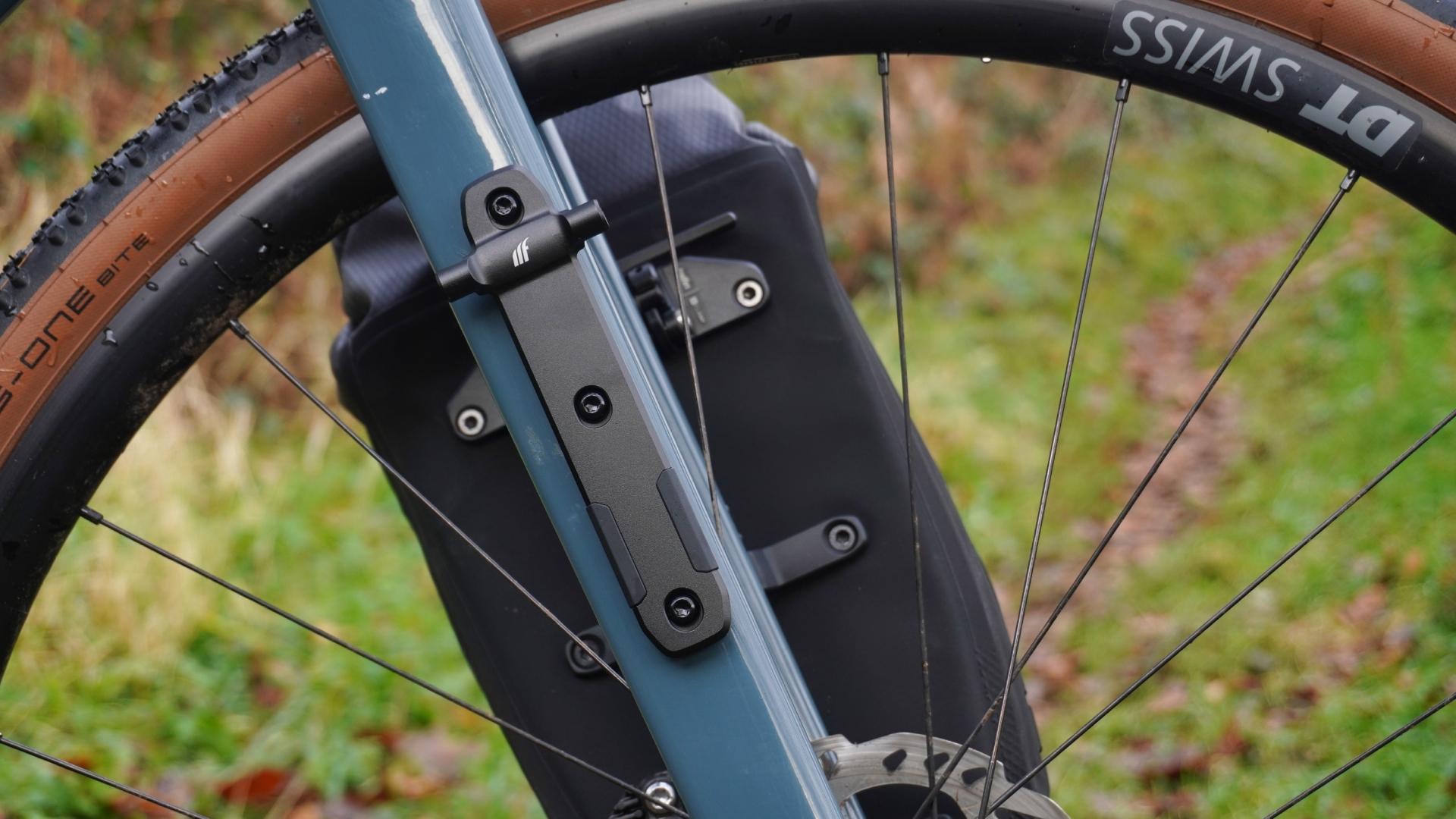
Cargo cages
Let’s start with cargo cages. These are incredibly useful pieces of kit - and ever more gravel bikes are being produced with triple fork bosses for mounting them (although there are many ways of attaching a cargo cage even if you don’t have the luxury of triple bosses).
Cargo cages (and associated dry bags) are a lighter and more ‘rattle free’ solution than the traditional fork mounted panniers of classic touring bikes - much better suited to the more minimalist approach of bikepacking and the kind of gravel tracks many long distance off-road cycling routes tend to traverse.
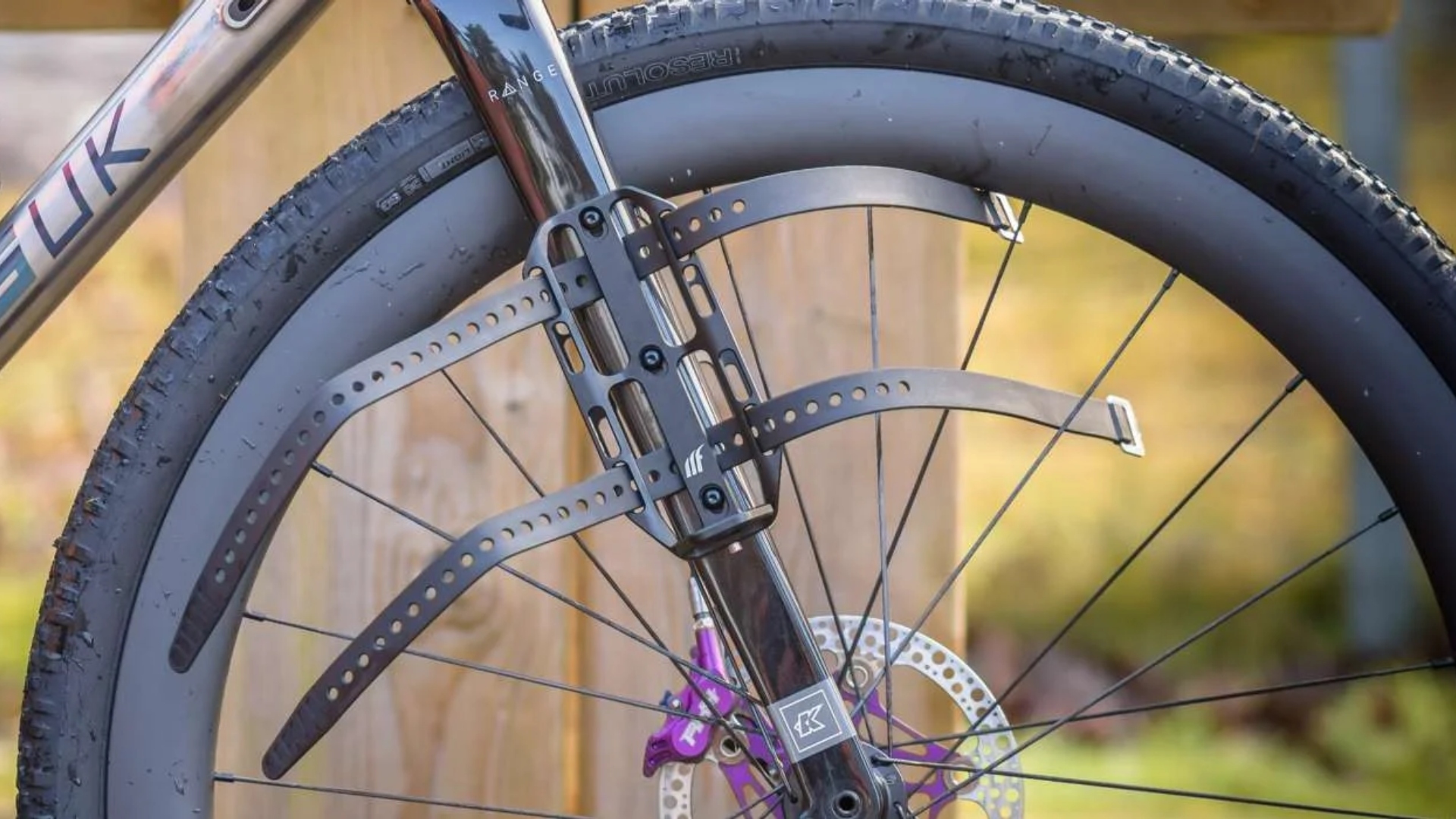
Besides their utility in providing a few more liters of packable space, cargo cages have an additional benefit in improving the weight distribution of your bike and making it easier to handle. An oversized giant saddlepack can shift the center of gravity quite significantly towards the rear, resulting in lighter steering and compromised handling. A bit of weight down low at the front really helps with that.
They’re also pretty bombproof. At its most reductive, it’s just a piece of metal, some cord and a bag. There’s not much to go wrong - and not much which can’t be fixed, replaced or bodged if you’re caught short in a remote area.
The latest race content, interviews, features, reviews and expert buying guides, direct to your inbox!
But there are several downsides.
First, to take anything out of the dry bag, you need to undo the straps holding the dry bag in place. It’s not especially difficult, but it is an extra step and simplicity is a valuable commodity when you’re pushing a four figure cumulative distance.
Second, those straps which bind the dry bag in place on a cargo cage mean that you do have to be quite careful about what kit you put in those dry bags - anything that can be easily crushed in a no-go.
And third, although some cargo cage designs are quite low profile, they do still interrupt the clean lines of the fork when not in use and left on the bike. Not a dealbreaker for everyone, but still also a consideration.
Fork pack
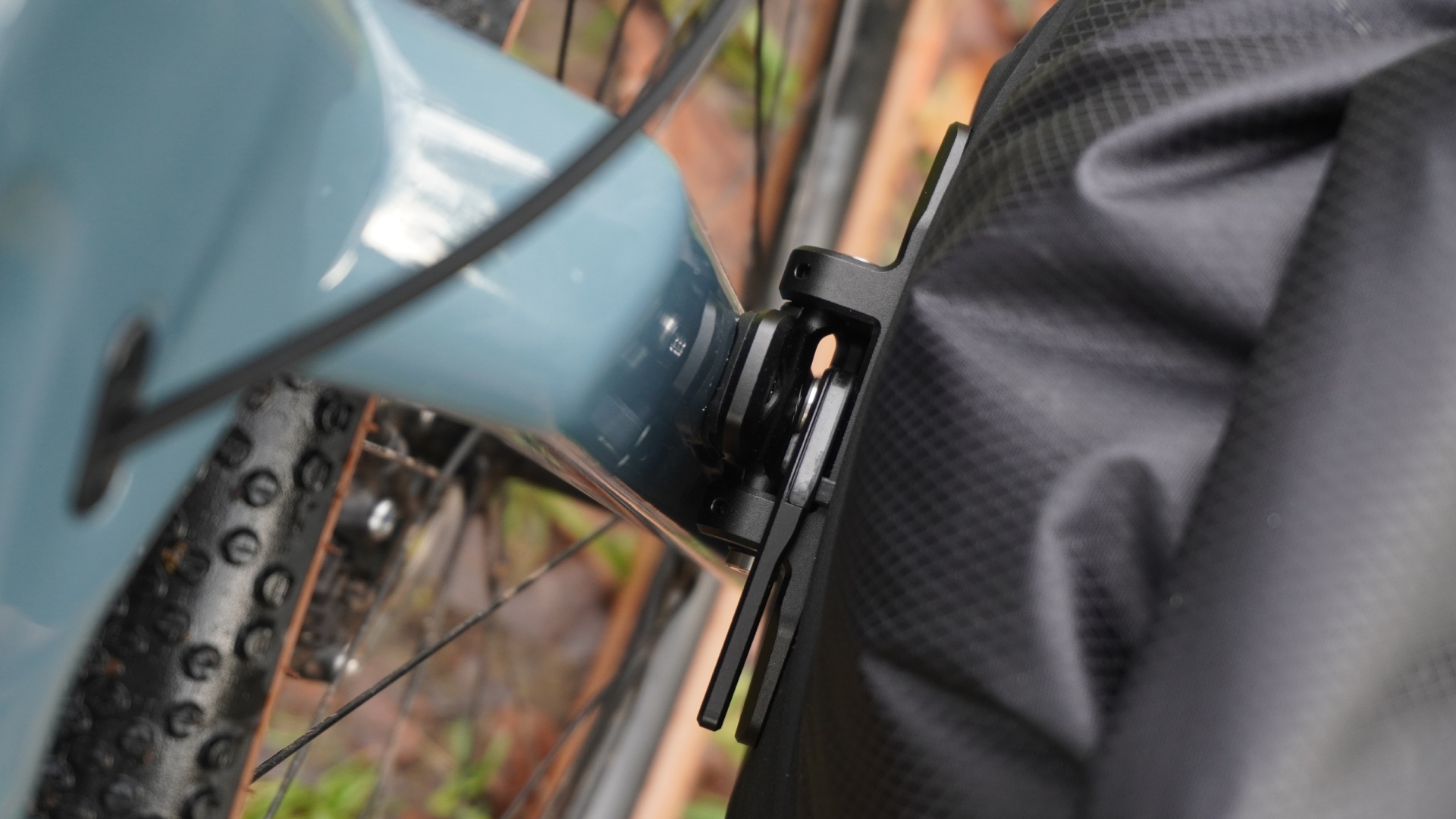
Those issues are what Tailfin’s Fork Pack seeks to address. First off, Tailfin has taken its X-Clamp clamping mechanism from its rear panniers and has shrunken this down for the front panniers. The X-Clamp is quick to release with a simple lever and is field proven in its ability to eliminate rattling.
Of course, you’re probably wondering why Tailfin has introduced a new X-Clamp for the front panniers, rather than having the panniers being completely interchangeable between front and rear.
The answer is that Tailfin wanted the front pannier mount not to be obtrusively large - which the rear pannier clamping points would be if simply ported across. Shrinking down the rear pannier mounting points wasn’t an option because otherwise the maximum recommended load would have to be reduced - the front panniers can take up to 4.5kg on each side (or 3kg if you only have two bosses).
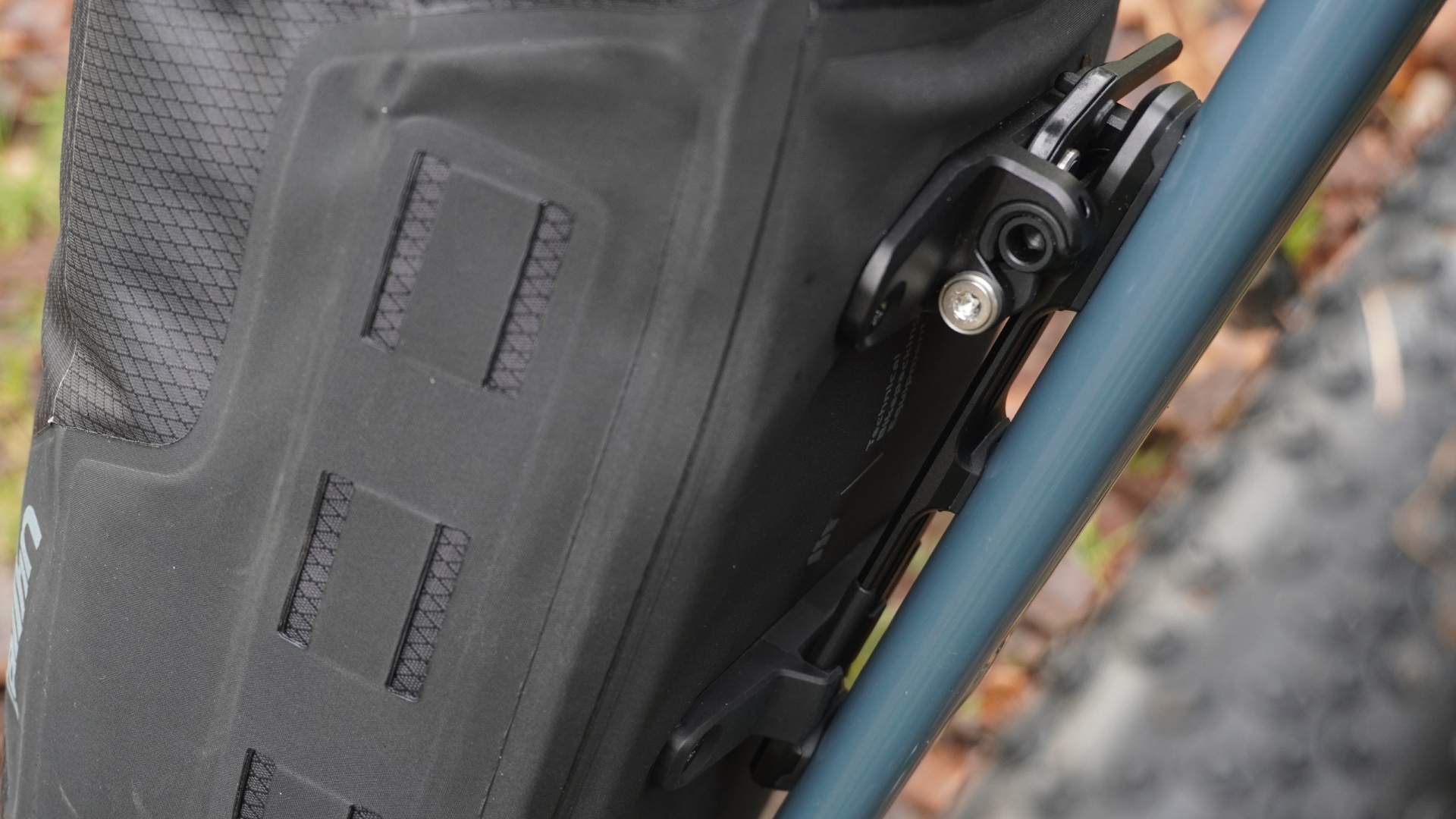
In a nod to some intercompatibility, the mounting hardware is actually replaceable between the bags. So, if you have a 5 liter rear mini pannier that you want to use on the front, you can replace the mechanism on the bags you have.
The primary benefit of the Fork Pack front pannier is that it makes it much easier to access your kit quickly. Rather than having to loosen straps which clamp the bag to a cargo cage, it’s as simple as unfurling the top and reaching in.
With the X-Clamp mechanism, it’s similarly quick and easy to remove the Fork Pack, whether that’s for taking your kit into the tent with you, or bringing the bags with you once you’ve stopped off somewhere. No faffing about with straps - or wondering whether to carry them with you or leaving them on the bike.
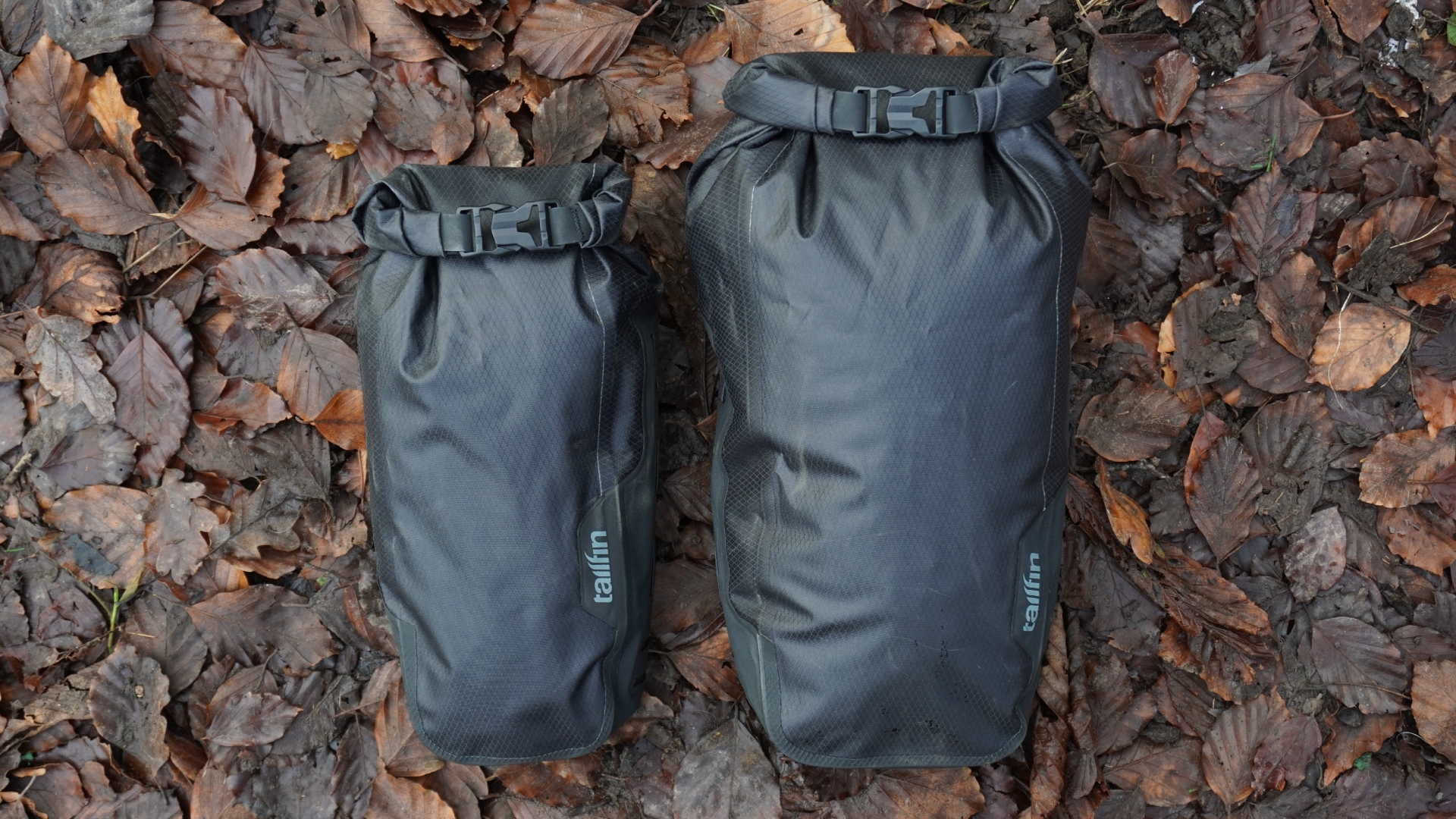
Of course, some people will still prefer cargo cages for their bombproof reliability - just as some prefer bar-end shifters over integrated shift/brake levers. But having used Tailfin’s rear panniers across thousands of kilometres and not experienced any issues, that does bode well for the durability of this new miniaturized X-Clamp design.
I haven’t yet used the Fork Pack bags in anger, though I will be heading out on a winter bikepacking trip in the new year, so stay tuned for that. But I have been out on a few rides with the Fork Packs in tow and been roundly impressed. So far they’ve proven as rattle-free as the rear panniers and the relatively low position on the fork means that they don’t adversely affect the handling.
I haven’t yet ridden through heavy rain with the Fork Packs, but I have been through some torrential downpours with the rest of Tailfin’s range, and the waterproofing has been impeccable. But I’m sure it won’t be much longer until I have direct experience of the same with the Fork Packs!
Pricing
The five liter packs come in at $100 / £80 whilst the 10 liter packs are $125 / £100. The Fork Pack Mounts are $40 / £30. So, it is an expensive system but my first impressions are that it’s up to the same high standards as the rest of Tailfin’s range. You can view the range on Tailfin.cc here.

After winning the 2019 National Single-Speed Cross-Country Mountain Biking Championships and claiming the plushie unicorn (true story), Stefan swapped the flat-bars for drop-bars and has never looked back.
Since then, he’s earnt his 2ⁿᵈ cat racing licence in his first season racing as a third, completed the South Downs Double in under 20 hours and Everested in under 12.
But his favourite rides are multiday bikepacking trips, with all the huge amount of cycling tech and long days spent exploring new roads and trails - as well as histories and cultures. Most recently, he’s spent two weeks riding from Budapest into the mountains of Slovakia.
Height: 177cm
Weight: 67–69kg